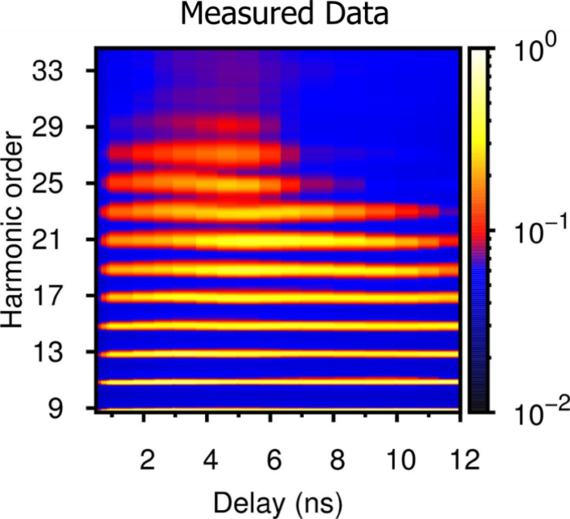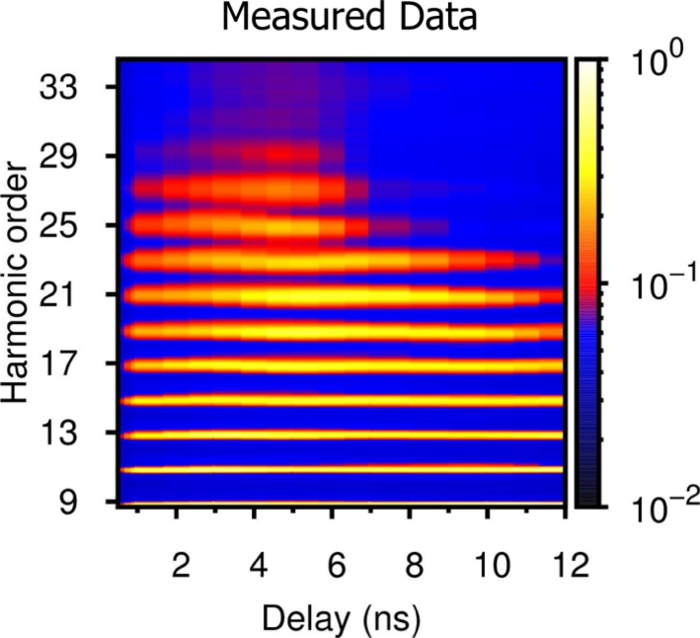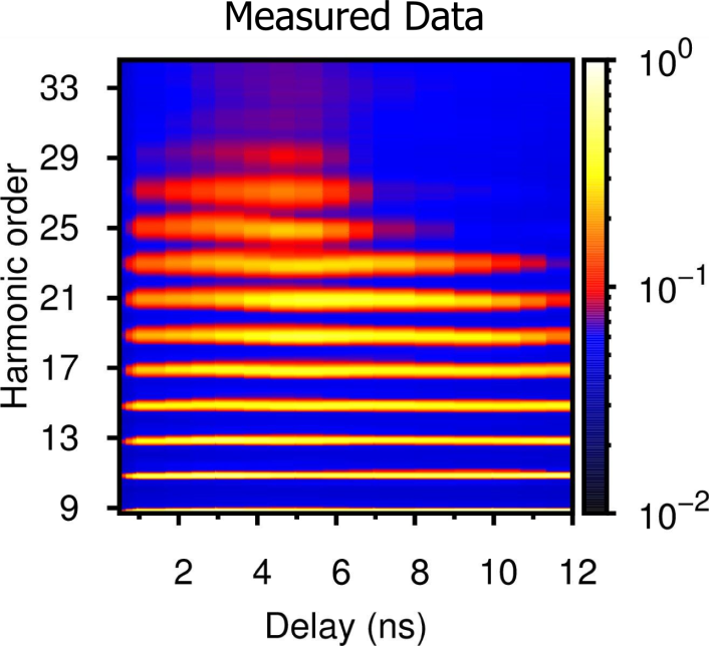Harmonic Generation



The main conversion process we study is the generation of high-order harmonic radiation. Investigating the properties of this unique light source allows studying ultrafast dynamics on atomic and molecular timescales (attoseconds / femtoseconds) as well as structural imaging down to sub-nanometer spatial resolution.
Our projects deal with investigations on the nonlinear dynamics during propagation of intense laser pulses in filaments, high order harmonic generation from liquid water droplets, and the nonlinear conversion processes from plasmonic field enhancement in nanostructure.
-
Filamentation
A high power femtosecond laser pulse weakly focussed in a nonlinear medium, like a rare gas, undergoes self-focussing due to the spatial Kerr effect. The on-axis intensity increase is counteracted by ionisation and saturation effects, forming a self-guiding channel significantly longer than the Rayleigh range, up to several meters. Due to self-phase modulation, strong spectral broadening and white light generation is achieved. The supercontinuum can be compressed to a sub 7 fs ultrashort pulse, suitable for high-order harmonic generation. Exploring the evolution of the filament along the propagation axis, third-order and high-order harmonic generation can be observed directly from a filament without subsequent recompression of the pulse. Regimes of discrete harmonic orders as well as continuous spectra are found, enabling the generation of attosecond pulses in filaments.
![]()
![]()
![]()
Long-time exposure of a 30 cm long filament. The blue-violet light originates from the hot plasma within. -
High-Order Harmonic Generation in liquid water droplets
Our group has set up an experiment, creating a determined series of micrometer-sized water-droplets under vacuum condition as target for high-order harmonic generation. This masslimited droplet resembles an excellent interaction-area between target and fundamental radiation, giving the opportunity of a debris-free conversion process combined with a potentially high amount of emitting particles.
![]()
![]()
![]()
Scattered light of a focused femtosecond laser beam from a liquid water droplet. -
Nanoplasmonics
“Bowtie” nanoantennas are not unusual in the field of plasmonics, yet they still can be used in unusual ways. Harnessing the near-field enhancement due to locally resonant surface plasmons, Shi et al., demonstrate material ablation and concurrent deposition of high-quality film at the subwavelength scale, all driven by a bowtie-based oscillator, rather than a laser. This gentle ablation is mediated by hot-electron emission and electrostatic acceleration—a different mechanism than for thermal ablation or optical breakdown. This mechanism can be made to work for either metallic or dielectric materials, rendering this approach even more appealing for nanotechnology.
![]()
![]()
![]()











